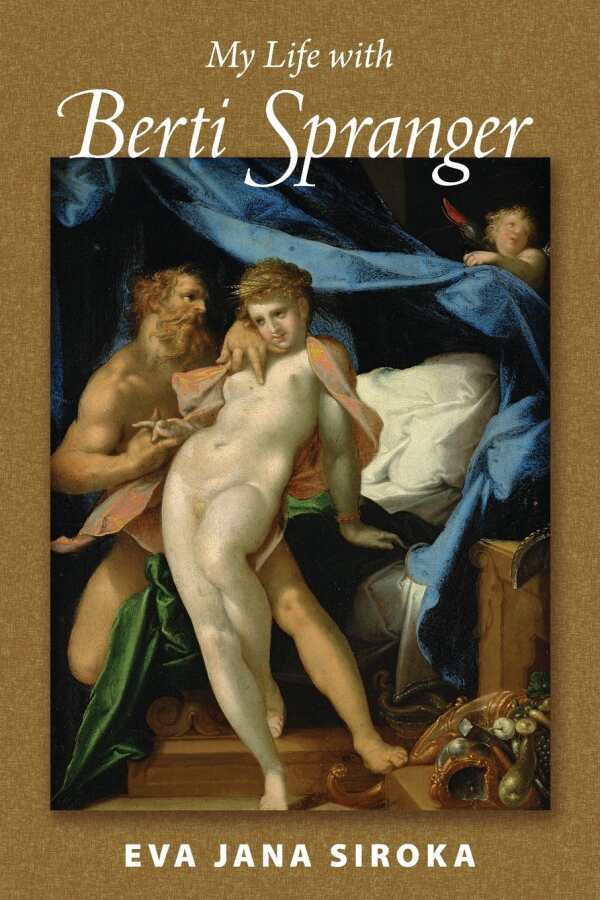My Life with Berti Spranger
An intriguing plot and engaging story highlight this tale of love and art.
My Life with Berti Spranger, a novel by art historian and artist Eva Jana Siroka, stars an art collector who discovers a memoir by sixteenth-century erotic painter Bartholomaeus Spranger. This brings him into contact with a student of history, and Spranger’s titillating art and writing help to prompt the modern pair to romance. This intriguing plot concept is poorly served by disjointed writing, but the glimpses of Spranger’s life in the Flemish court are captivating.
Pieter Van de Graeff is a wealthy art dealer and confirmed bachelor in early middle age. When he comes across a manuscript he believes was written by Spranger, he is thrilled, not least by the profit this may bring. When he meets, equally by chance, the young Karolina Světlá, he can’t help but notice her legs; but she turns out also to be a history student and competent translator of the document. As Pieter carries on his materialistic, jet-setting lifestyle, he is increasingly drawn to Karo, a strangely mercurial character. The sexual nature of Spranger’s writings influences the relationship that develops between Pieter and the younger woman.
Two story lines alternate, as Pieter and Karo get to know one another, and Spranger’s memoir is presented in excerpts as Karo translates it. The memoir passages are set in a decorative italic font that can be a little challenging to read. The contemporary plotline is difficult to follow for a different reason: topics and settings shift suddenly, in both narrative and dialogue, giving the story a jumpy feeling and presenting some uncertainty as to the continuity of scene, setting, and speaker.
Karo’s character is perplexing. Her moods change quickly, as she sobs, laughs, then sulks: unexplained, her behaviors feel unconvincing. Because the modern-day story is told in first person from Pieter’s perspective, his motivations are a little clearer, although he is apt to change his opinions and attitudes, leaving some potential confusion.
Spranger’s story is engaging and well told, although it does not follow a linear chronology, and new characters sometimes arrive without introduction, so that it too requires careful attention. The favorite court painter of Emperor Rudolf II of Prague, famous for his erotic subjects, his memoir is filled with sexual escapades, including a few rapes (toward which Pieter’s forgiving attitude is rather disturbing). The perspective offered on historical Prague by this subplot is perhaps the most appealing part of the novel. As outlined in the author’s note, many minor characters in Spranger’s story are true to history as well, and Siroka’s background as an art historian lends credibility to that aspect of her work. Siroka’s own illustrations accompany the text and are another highlight.
The art historian’s fictionalization of the life of a fascinating figure is remarkable and worthwhile. The contemporary story line involving Pieter and Karo by comparison begins with an appealing concept, but the characters and writing disappoint. My Life with Berti Spranger will please those interested in historical figures.
Reviewed by
Julia Jenkins
Disclosure: This article is not an endorsement, but a review. The publisher of this book provided free copies of the book and paid a small fee to have their book reviewed by a professional reviewer. Foreword Reviews and Clarion Reviews make no guarantee that the publisher will receive a positive review. Foreword Magazine, Inc. is disclosing this in accordance with the Federal Trade Commission’s 16 CFR, Part 255.

